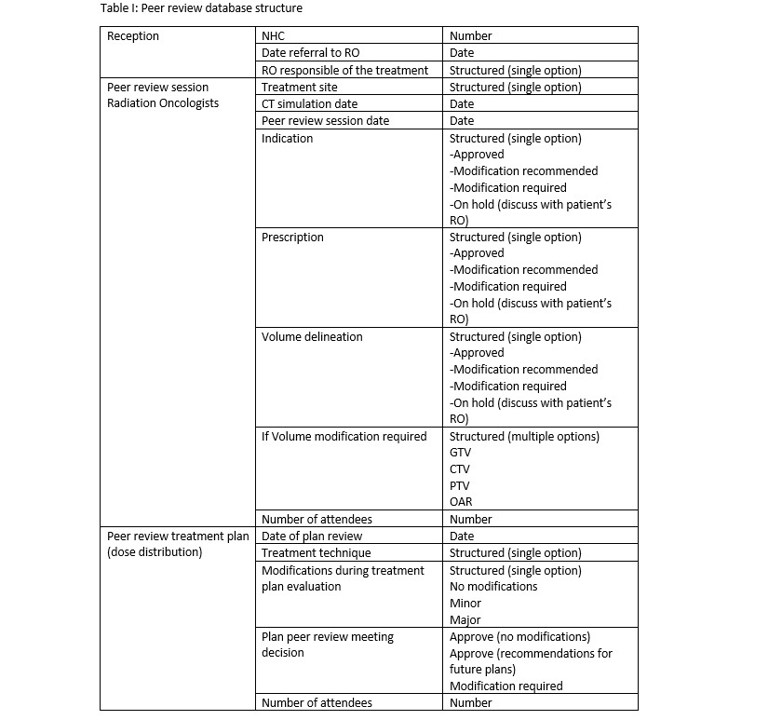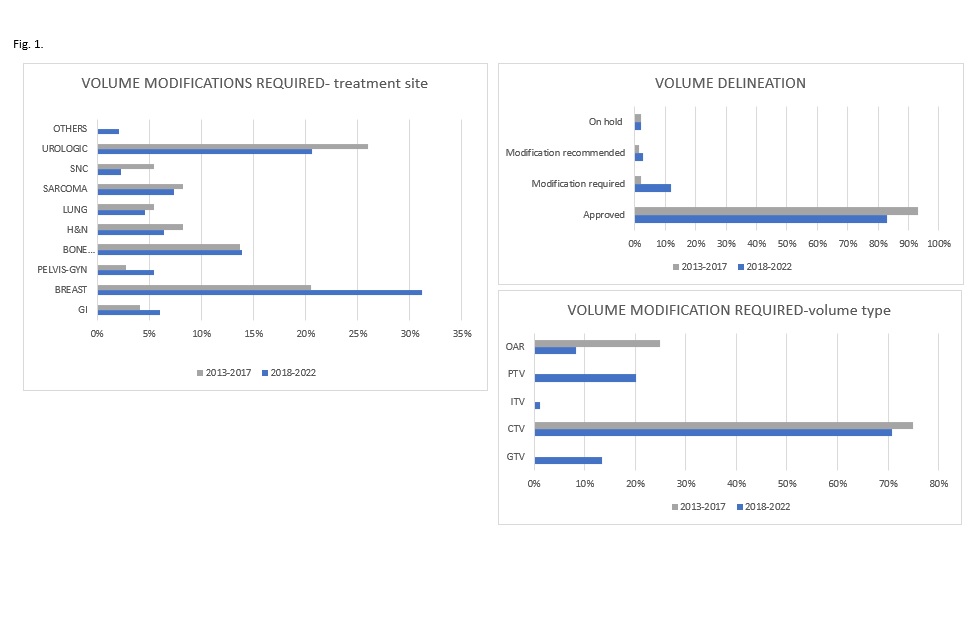Real world data of peer review rounds on a daily basis: A nine-year experience
Jady Vivian Rojas Cordero,
Spain
PO-1083
Abstract
Real world data of peer review rounds on a daily basis: A nine-year experience
Authors: Jady Vivian Rojas Cordero1, Núria Jornet Sala2, Katerina Majercakova1, Eugènia Otero Pla1, Núria Farre Bernado1, Agusti Pedro Olive1, Arantxa Mera Errasti1, Ana Maria Soto Cambres1, Laura Montezuma Niño1, Saba Jiries Rabi Mitre1, Gemma Sancho Pardo1
1Hospital de la Santa Creu i Sant Pau, Radiation Oncology, Barcelona, Spain; 2Hospital de la Santa Creu i Sant Pau, Medical physics, Barcelona, Spain
Show Affiliations
Hide Affiliations
Purpose or Objective
Peer review (PR) rounds are an essential step in the process of Quality Assurance in Radiation Oncology. We present the implementation and results in our department.
Material and Methods
In 2013 we implemented PR rounds on a daily basis. The reviewed cases and the decisions were recorded prospectively in Redcap database (table1). Pre-2017 the evaluation was conducted by radiation oncologists (RO) and medical physicists (MP) the day of the first fraction. The analysis is divided in two periods pre and post 2017 when there was a merge with another RO department.

Results
From 2013 to 2022 a total of 11.968 cases were peer reviewed. The distribution of decisions on prescription, volume delineation (per site and volume type) is shown in Fig.1.

In 2017 due to a 6% increase of re-planning treatments, PR was divided into two rounds: First evaluation by RO of treatment indications, contours and prescriptions. Second by MP evaluation of planning and dose distribution. The cases presented for PR increased over the years: 41.1% the first year and up to 96.2% in 2021. The mean number of RO attending the PR was 4 out of 11 on the first period and 8 out of 15 on the second.
Conclusion
The number of cases that needed modification increased in the second period due to different criteria of the two teams. The integration of PR meetings led to create clinical protocols and improve the adherence to them, better feedback between physicians and the creation of new workflows.